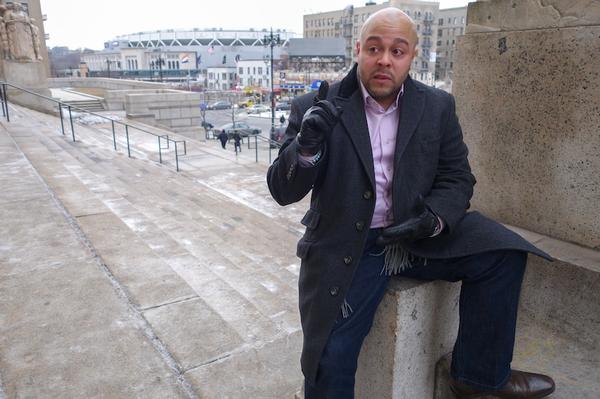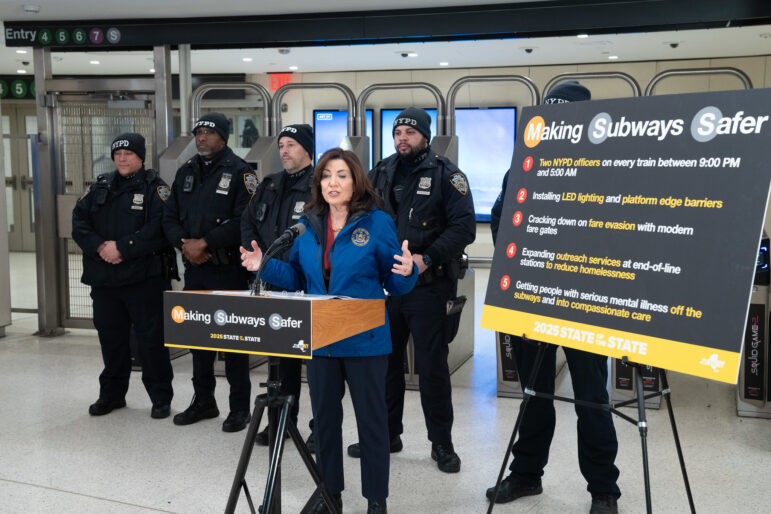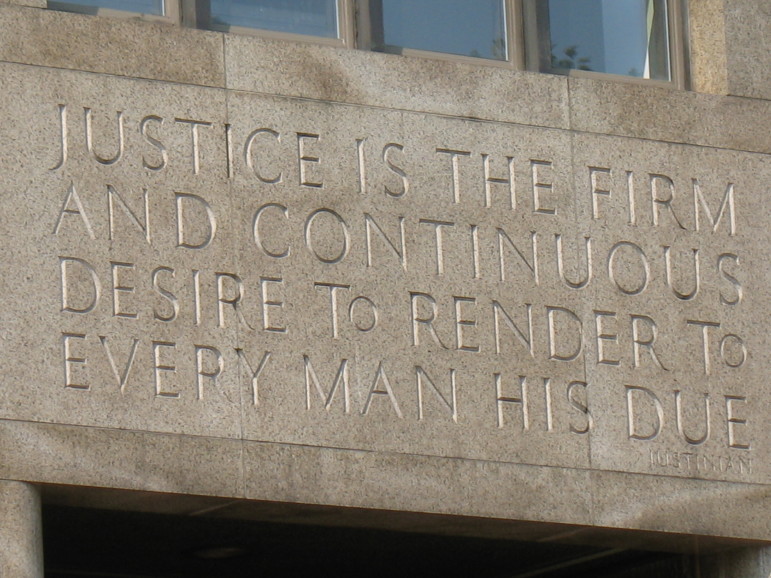
Photo by: Oliver Morrison
Jose Rodriguez, district manager of Community Board 4 in the Bronx, is at the forefront of efforts to enable boards to hire urban planners.
Jose Rodriguez leads the most local level of government in the city: he’s district manager of Community Board 4 in the southwest Bronx. A proposal to build a professional soccer stadium in his neighborhood could be coming before his board soon. Rodriguez says his community will be ready.
“Just because you come in and give us a nice colorful presentation, we’re not going to rubber stamp it,” Rodriguez said.
To play a key role in this and other critical issues, he is trying to strengthen his community board. Last year he led a Bronx task force of community board leaders commissioned by Bronx Borough President Ruben Diaz Jr. to find new ways to empower community boards in the Bronx. He was the lead district manager behind the report and he has already made one change: bringing in a city planner to provide additional training of board members. Now he is pushing for more, including the addition of a professional planner that could help the Bronx’s 12 boards make sense of the projects they vet. That’s not radical: It was called for in the city’s extensive Charter Revision in 1989.
A critical community board role is analyzing development proposals like the soccer stadium, according to Rodriguez. So he brought in a Department of City Planning representative to explain the city’s land use policies at his board’s last two meetings.
“In the past, some of our board members would sit there, stuck on the process of the rezoning and they really should have had training,” Rodriguez says, adding that, typically, they’ve only had one two-hour training from the borough president’s office.
More frequent training sought
Some members of Rodriguez’s task force felt this amount of training was insufficient. “It’s not enough, because it’s all targeted in one evening and it’s just too much information to digest,” says Xavier Rodiguez, Community Board 5’s district manager.
This need for training isn’t specific to the Bronx. Gale Brewer, the Manhattan Borough President, testified at City Hall on March 3 that Manhattan community board members are also asking for more training.
Earl McKay, CB4’s housing and land use committee chair, says he thinks the extra training from city planners will be helpful but that, often, board members sharing their own concerns is even more important.
“You want community members to state how they feel it is affecting them, and what they feel the needs are of the community,” McKay says.
According to some leaders, a board’s make-up is also critical. “Some community boards are lucky and have urban planners as members,” said Jessica Silver, director of strategic operations for Comptroller Scott Stringer, at the March 3 Council session. “But not every board has that.”
Bob Fanuzzi, chair of Community Board 8 in Riverdale, a relatively affluent Bronx neighborhood, says his board has been successful at stopping, or changing, construction they’re critical of, such as a recent Montefiore Medical Center proposal they’ve deemed large and unnecessary.
He said his board has advantages: an urban planning expert is on the board, and local residents are active and constantly feeding it information. But even with all this expertise, he said his board could use extra training. “There is often a bewildering amount of legal detail to every proposal that we face that can be very difficult for even experienced board members to take in, in a single meeting,” says Fanuzzi.
His board is one of a few that has been able to utilize 197a, a 1989 provision of the City Charter, which enables community boards to actively lay out neighborhood land-use plans. But CB8 could use more planning help to create proposals for economic revitalization projects and health impact studies — significant work for board members with day jobs. “We are constantly needing to respond to new challenges all the time,” says Fanuzzi. “The job of sustaining and preserving a livable area is ongoing and never-ending.”
City planners can help strengthen board positions
Boards without as much expertise as Riverdale’s sometimes struggle to make sense of, and argue against, proposals in their communities. Strong, a CB4 board member, says having a dedicated city planner would give more authority to board positions.
“If I’m making an argument, they may not take my argument as seriously, despite the research I’ve done,” says Strong. “So maybe if they heard it from a certified city planner, it might carry more weight and ease reservations individuals have about certain proposals.”
The Bronx borough leadership agrees.
“Board members need to understand the basics,” says Tom Lucania, director of community boards at the Bronx borough president’s office, “but having a planner on staff to share that information in layman’s terms would benefit the board when reviewing development projects.”
A dedicated planner would also help community boards fulfill their function as independent agencies, Lucania adds.
“We rely on planning to come out of the mayor’s office, but the residents and the community board members have a vision for their own communities,” says Rodriguez.
A professional planner would also the playing field, according to Lucania. “It would give them the opportunity to get the same kind of expertise that the developers have, but right now their board budgets don’t allow that to happen,” he says.
‘Insufficient budgets’ block hiring planners
The Bronx Task Force recommendation echoes sentiments across the city. “The greatest challenge facing community boards today is their insufficient budgets and their lack of consistent dedicated land use expertise,” said Silver, the staffer for Stringer, who as Manhattan borough president who focused on improving community boards. “It really is essential that community boards are able to hire full time planners.”
At the same Council meeting where Brewer and Silver spoke, Councilman Mark Levine estimated that, because of inflation, community board budgets would have to increase from the current $200,000, to more than $320,000, in order to equal the hiring power of their budgets in the early 1990s. Levine said he will push for budget increases and is optimistic it could happen for the first time in almost two decades.
“It’s a tiny amount of money in the scope of the budget,” said Levine. “We’re talking numbers which are low single-digit millions, but would have a significant impact on these communities.”
But with so many people fighting for money during the city’s budget process, Rodriguez says that adding a planner may be one of the more “pie in the sky” recommendations from his task force and it may not happen for a while, if at all.
Will de Blasio help boards get stronger?
Nonetheless, Rodriguez and other Bronx district managers are hopeful that many of their proposals will be implemented now that they have a more supportive mayor and borough president. De Blasio administration staffers, led by director of community affairs Marco Carrion, met on March 10 with nearly all the Bronx community district leaders.
“I think we all came out of that meeting with a renewed sense of hope between community boards and the mayor’s office,” says Rodriguez. “It’s been 20 years since the last time some of them were invited to City Hall.”
Bronx community board members say that eight years ago they didn’t feel this kind of support from the mayor or borough president. Although he wasn’t manager then, Rodriguez works for the same community board that in 2006 voted to oppose the new Yankee stadium. Most of the members who voted ‘no’ were later removed by then Bronx Borough President Adolfo Carrion, Jr.
This time, Rodriguez said, he and his board haven’t been pressured to take a particular stance on a potential new soccer stadium proposal from the New York Football Club, owned by the New York Yankees and Manchester City Football Club.
Time will tell whether expert planners will be hired and give community boards more influence on development projects. Rodriguez thinks the moment to act is now.
“Listen, if you had 12 years of Bloomberg and eight years of Guiliani, that’s 20 years of a different mindset than a community like ours,” says Rodriguez. “Now we have a new administration and we need to take advantage.”








